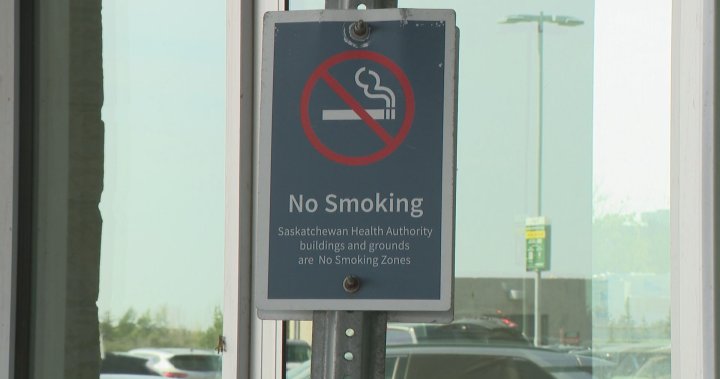James McCrimmon is facing the stress of having a critically ill child while also worrying about shielding his son from second-hand smoke when entering and exiting the hospital. His son Isaac, 3, was diagnosed with leukemia last April and the family moved to Saskatoon from Dauphin, Man., for his care. Isaac relapsed in October and the family went to Winnipeg for a bone marrow transplant. Now, Isaac is in the intensive care unit at Saskatoon’s Jim Pattison Children’s Hospital, fighting infections and other medical issues as he recovers from leukemia. McCrimmon is concerned about the crowds of smokers at the front entrance of the hospital, exacerbating Isaac’s already difficult health challenges.
Despite the presence of multiple “no smoking” signs, McCrimmon has observed many people smoking on hospital grounds, especially near the entrance. He hopes for better enforcement by security to ensure that smokers adhere to the designated smoking areas. In an emailed response, the Saskatchewan Health Authority (SHA) acknowledged that smoking on their properties is an ongoing concern and discourages smoking outside of designated areas. The SHA reported that protective services officers patrol their facilities to monitor smoking activity and enforce the no-smoking policy to protect patients and visitors from the harmful effects of second-hand smoke.
The stress of managing Isaac’s illness is compounded by the added worry of exposing him to second-hand smoke during his visits to the hospital. McCrimmon’s son already struggles with nausea and vomiting due to chemotherapy drugs, and having to navigate through crowds of smokers only adds to his discomfort. McCrimmon is advocating for stricter enforcement of smoking policies on hospital grounds to create a safe and healthy environment for patients and their families. The impact of second-hand smoke on vulnerable individuals like Isaac can be significant, further jeopardizing their already compromised health.
The challenges faced by families like the McCrimmons highlight the importance of maintaining smoke-free environments in healthcare facilities to protect patients, visitors, and staff from the harms of tobacco smoke. The presence of smokers near hospital entrances not only violates the no-smoking policy but also disregards the potential harm caused by second-hand smoke exposure. Hospitals play a crucial role in promoting health and wellness, and ensuring a smoke-free environment is essential in providing a safe and supportive setting for individuals seeking medical care.
The Saskatchewan Health Authority’s efforts to discourage smoking on their properties and enforce no-smoking policies are critical in safeguarding the well-being of patients like Isaac and their families. By monitoring smoking activity and taking action against individuals who violate the no-smoking regulations, the SHA demonstrates its commitment to creating a healthy and smoke-free environment within its facilities. The collaboration between hospital security, staff, and patients’ families is essential in upholding the no-smoking policies and ensuring that everyone can access healthcare services without being exposed to the dangers of second-hand smoke.
In conclusion, the story of James McCrimmon and his son Isaac sheds light on the challenges faced by families dealing with childhood cancer and the additional stress of navigating through smoking areas in hospital premises. The advocacy for stricter enforcement of no-smoking policies by individuals like McCrimmon is essential in promoting the health and well-being of patients, especially those with compromised immune systems. Hospitals must continue to prioritize creating smoke-free environments to protect vulnerable populations and provide a safe and supportive space for healing. By working together to uphold no-smoking regulations, healthcare facilities can enhance the quality of care and ensure that patients like Isaac receive treatment in a healthy and smoke-free setting.













